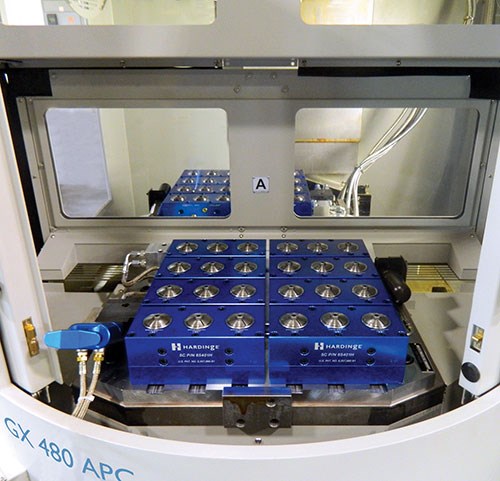Hydraulic or Pneumatic Actuation for Collet Blocks?
Collet-style workholding devices like collet blocks offer a number of benefits, but which actuating method is most appropriate for you?
Share







Grouping collet blocks together enables machine tools to machine multiple parts unattended. Collet blocks can be configured in a number of ways, including on tombstones and trunnion tables.
Collet-style workholding devices, such as collet blocks, offer a number of benefits. Collets automatically center parts to their center points known locations, they provide equal gripping pressure around a part’s circumference and expanding collet systems enable effective internal gripping of thin-wall parts. Grouping collet blocks together enables machine tools to machine multiple workpieces unattended over long stretches of time. However, should you go with pneumatics or hydraulics to actuate them? This article based on input from offers advice.
Related Content
-
Lean Approach to Automated Machine Tending Delivers Quicker Paths to Success
Almost any shop can automate at least some of its production, even in low-volume, high-mix applications. The key to getting started is finding the simplest solutions that fit your requirements. It helps to work with an automation partner that understands your needs.
-
Workholding Fixtures Save Over 4,500 Hours of Labor Annually
All World Machinery Supply designs each fixture to minimize the number of operations, resulting in reduced handling and idle spindle time.
-
Prioritizing Workholding Density Versus Simplicity
Determining whether to use high-density fixtures or to simplify workholding requires a deeper look into the details of your parts and processes.












